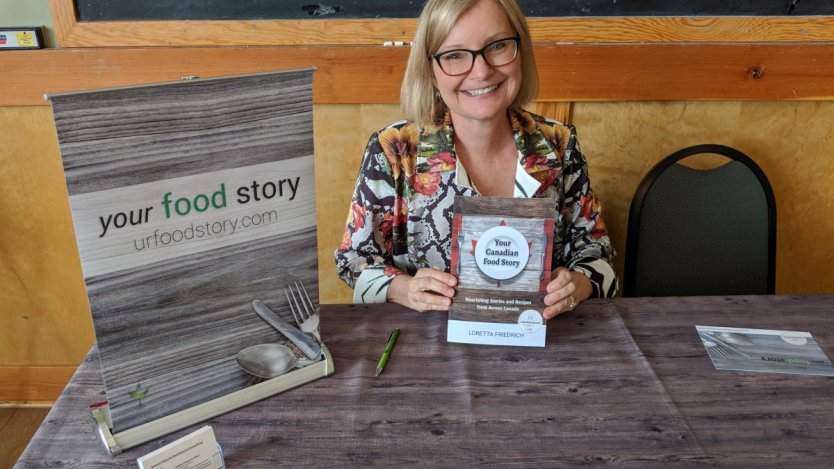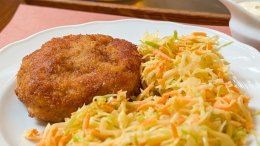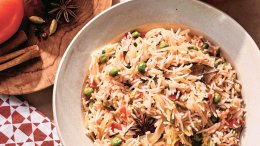Part of Loretta Friedrich’s job as nutritional consultant is talking to people about food—what they eat, why they eat it, how that food or food experience makes them feel, and then suggest ways to adjust or enhance their diet to improve their quality of life. Often, these discussions lead to food memories of warm kitchens, apron-wearing grandmothers, family holidays, the smell of something fresh-baked. Sometimes, though, the memories have more painful connections: poverty, mental illness, addictions, single parents on welfare.
She realized as varied and multicultural as we are (as a society), we all eat and we all have stories connected to food. She also knew, first hand, that while the stories themselves differed, what remained constant was that every story was deeply-rooted and emotional.
Friedrich felt that if these stories had such an impact on her, surely, others would want to share their memories and recipes. And she was right. The call went out to people in her close circle and soon broadened to every corner of Canadian territory. One year later, with stories from 113 contributors and 110 accompanying recipes, she went to press.
![Image for [node:title]](/sites/default/files/styles/article_freeheight/public/field/image/ycfs_book_with_background.jpg?itok=7mokr5Lh)
Your Canadian Food Story was an immediate bestseller on Amazon and garnered the #1 Hot New Release in Canadian Cooking when it was released in March.
So, what is it about food that speaks to the hearts of so many people? Friedrich says it’s all about needing to feel connected to something. Food nourishes us, physically, but it also nourishes us emotionally, psychologically and spiritually through tradition, culture, family, and community. The foods one grew up on in the rich Okanagan Valley in British Columbia will be vastly different from the boiled meat dinner served in Newfoundland, but both experiences ground the individual to a time and place. These experiences shape us, guide us and root us to our ancestors.
You may not follow Jacqui Masuzumi’s recipe for dried fish on page 71, but you will surely smell the scent of the spruce boughs she and her family laid on to sleep while they camped near the Mackenzie River in the Northwest Territories, and you may never eat a raw moose kidney like Adam Malcom of Qikiqtarjuaq, Nunavut, but you will certainly relate to his description of it tasting like a bloody nose. You might, though, be enticed to make blueberry grunt, a recipe from Natasha Tremblay’s late grandmother, Eleanor Schultz of Nova Scotia; or Janet Wiszowaty’s dill pickle soup, a recipe she found in a cookbook authored by a woman who was in the same refugee camp as her mother-in-law after escaping from Poland after World War II.
Your Canadian Food Story also reminds us of the variety of foods cooked in this country—from the ultimate Bangali comfort food, kichuri (rice and lentils), to the Portuguese green soup, caldo verde. Friedrich’s book is not only a celebration of food, but a celebration of Canada’s multicultural makeup, as well.
Food tastes better when you know the story behind it, and it tastes better when enjoyed with friends and conversations. To help promote that conversation, each of the book’s eight sections (tradition, culture, family, community, comfort, life, celebration, and legacy) are followed by table talk questions to help prompt discussion.
The author also implores us to be curious about food and to ask questions. Where does it come from? Who grows it? How was it processed? She encourages us to forage, to take cooking classes, and to break bread with other cultures because no matter how diverse we are culturally, we all have to eat.
There is room for more at this table. Friedrich is inviting you to upload your food memories at www.urfoodstory.com. Maybe your story will appear in a second edition.
The books are for purchase at the above noted website and through Amazon as well at all Italian Centre Shops in Edmonton.













